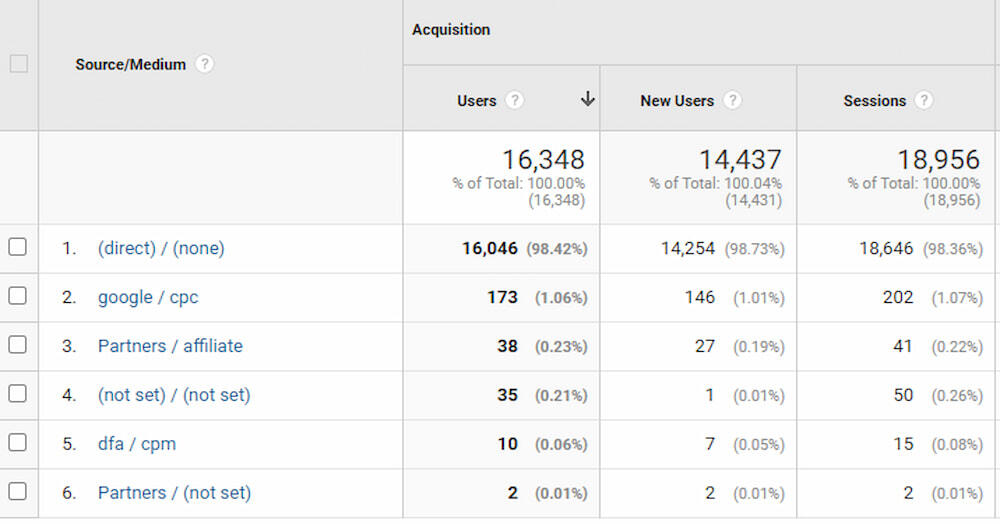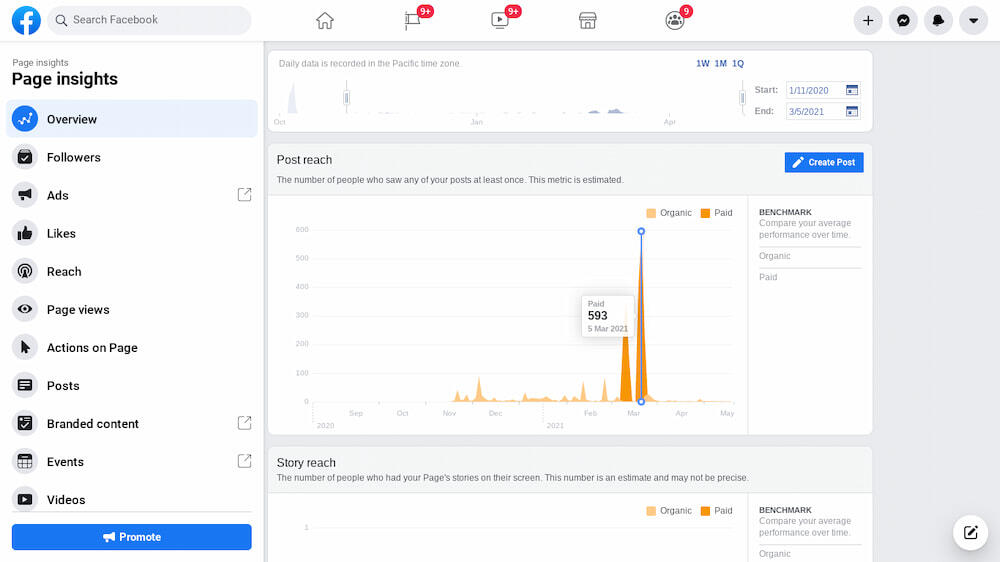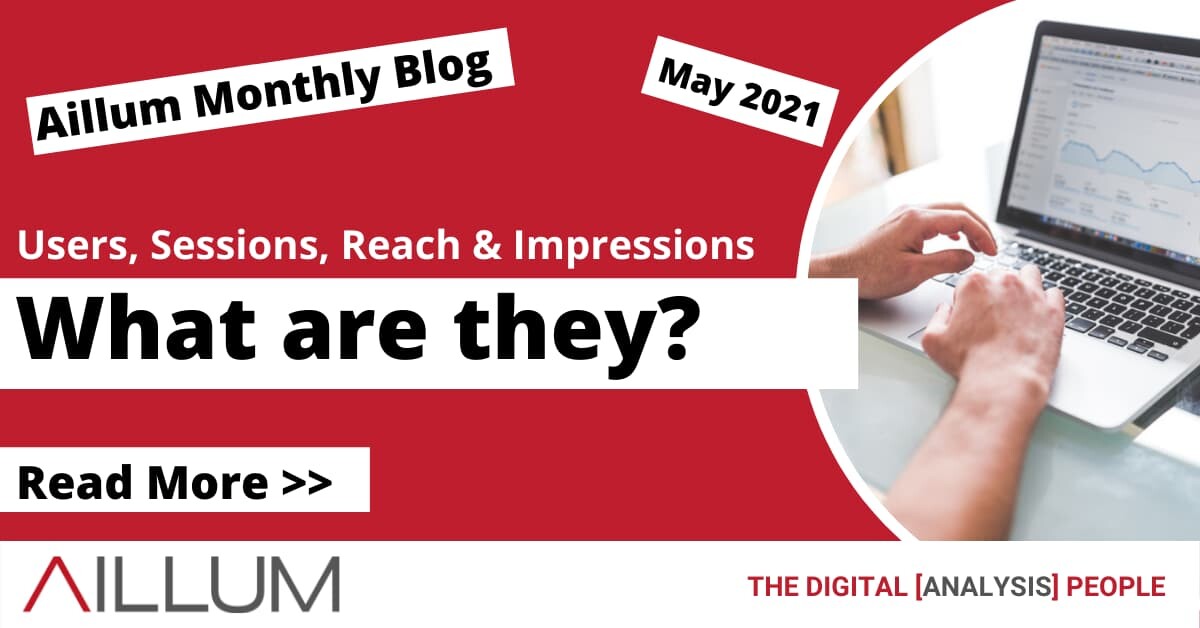When it comes to reporting the performance of digital marketing you’ll no doubt hear all kinds of terms mentioned that you might not be familiar with: Sessions, Impressions, Conversions, Reach and more!. These are known as metrics and they are incredibly important when it comes to improving your digital marketing efforts. In this blog we are going to explain some of the most common metrics and how they can be useful for your business online.
1. Users & Sessions
These are two separate metrics, but we’ve grouped them together to explain the difference between them, as there’s often a bit of confusion.
What is a User?
User refers to the number of visitors that your website receives. Think of it as the number of individual people who visit your website..
What is a Session?
A session refers to the number of times any user visits your website.
That means a single user could have multiple sessions when browsing your website, if they visit at different times or on different days.
For example, if I visit your website today for the first time, you’d record 1 user and 1 session. If I return later this evening, you’d record another session, but not a new user. By end of day you’d have 1 user and 2 sessions.
Sessions usually have strict time limits. For example Google Analytics has a session limit of 30 minutes. If a user visits your website, they begin a new session and the timer starts. If the user stops interacting with your website for at least 30 minutes (no clicking, no scrolling, etc) then the session will end.
After this 30 minutes, if the user resumes interacting with your website, a new session is generated. As a result, there can be multiple sessions recorded for a single user.
User IDs last much longer for tracking across multiple sessions and can last up to 2 years, refreshing their duration upon visiting a website.

How can you use User and Session Metrics?
The number of users is a simple indicator of how many individuals visit your website pages. Sessions can help determine how often those users are actively interacting with your website.
These metrics can therefore help you understand if your digital marketing is gradually bringing more individual people to the website or not, or if a growth in sessions and pageviews is actually being driven by the same users regularly returning.
Your business model will help determine how you can use this i.e. drive new customers or encourage repeat business?
2. Impressions
The impressions metric is used to measure the number of times your digital marketing content appears in front of users.. This could be a paid ad, through a platform such as Google Ads, Microsoft Advertising, or Facebook Ads. It could also be organic content, such as a Facebook post, a tweet on Twitter, a post on Instagram, or even your website appearing in search engine results.

In most platforms, whenever your content appears, it will count as a one impression. A single user can be shown your content any number of times depending on their behaviour (e.g. running multiple search queries, recurring visits to social platforms, etc). Each time your content is displayed will count as an individual impression. One key thing to note is that an impression will be counted even if a user does not actually interact with your content.
Simply displaying the content is enough to trigger an impression. Users don’t have to click on it or stop and read it.
Other metrics such as clicks, click-through rate and engagement) can be used to help measure how well content performs.
How can you use the impression metric?
Impressions can be a fantastic way to measure brand awareness campaigns and ranking improvements in search results. Brand Awareness campaigns are designed to get your content and brand in front of as many eyes as possible, so impressions are an ideal way to measure how often your campaign is seen.
Similarly, impressions of your website in search results (via tools like Search Console) can give a good measure of what impact your copywriting and blogging is having in driving organic awareness.
Free Digital Tips Direct to your Inbox!
Be among the first to receive tips, advice and news on all things digital performance related. From new features in Google Analytics, Data Studio and other tools, to interesting articles, videos and more! Completely Free! (Unsubscribe any time you like!)
3. Reach
Quite often the measurement of reach overlaps or gets mixed up with impressions. Reach is similar but distinct from impressions, in that it measures the number of people who your digital marketing content has been shown to. This is not the number of times that it is displayed to users but rather is the grand total of users that see your digital content.

For example, if you were to post an image about a new product that had 10,000 impressions, it may only have a reach of 5,000, with each of those users (on average) viewing the posted image twice. Reach can be considered to be the number of unique users that see any of your content.
Similar to impressions, the user doesn’t have to interact for reach to be counted. Your content simply has to appear in front of them at least once (i.e. in their Facebook feed).
How can you use the Reach metric?
Reach is a good metric for understanding how many people your content was put in front of, not just how often it was seen (impressions). It can therefore be used to help brand awareness campaigns, and to understand how well organic social posts are doing. If you want more people to see your content, and reach isn’t growing, you should perhaps re-evaluate what you’re posting.



